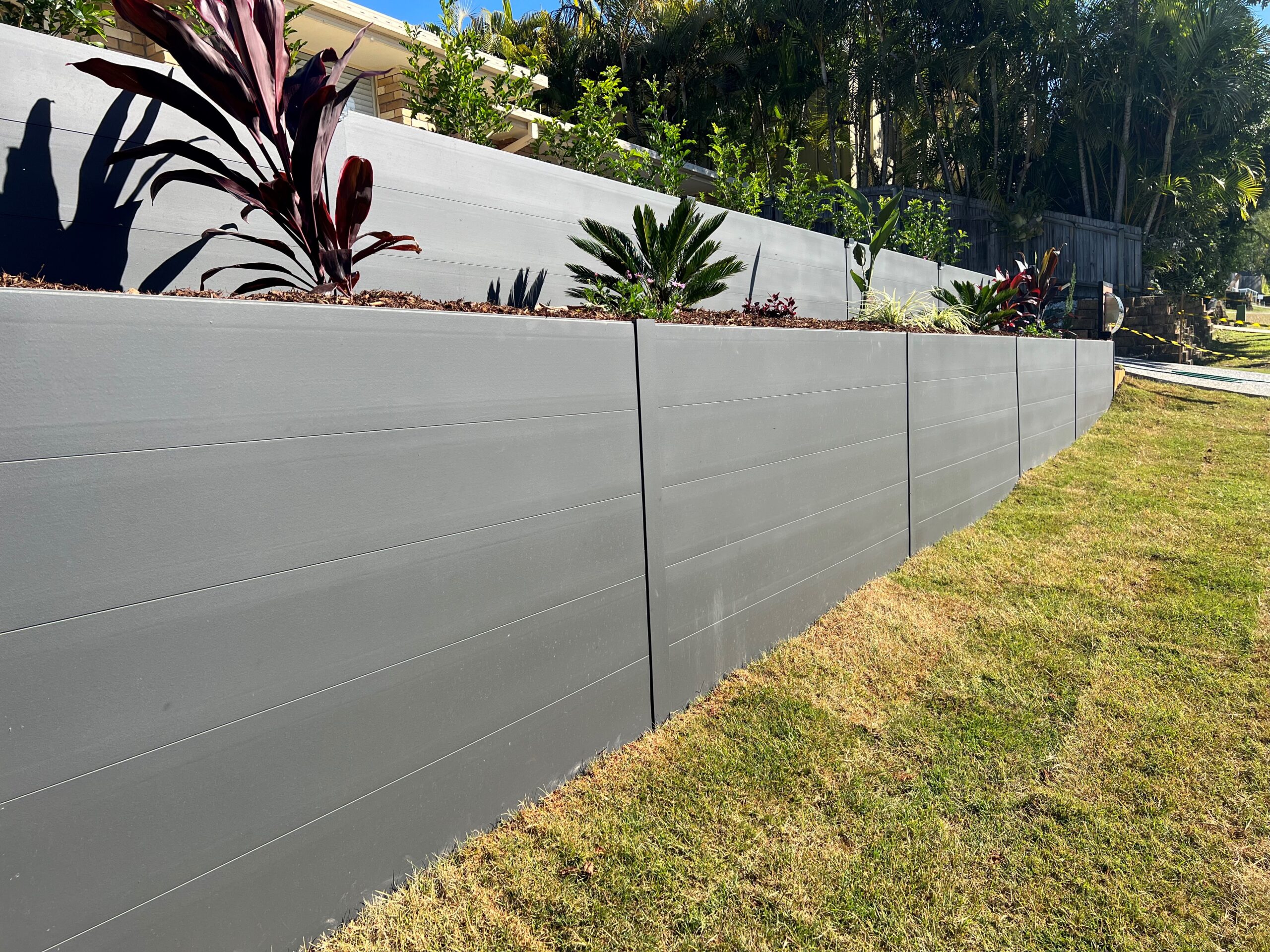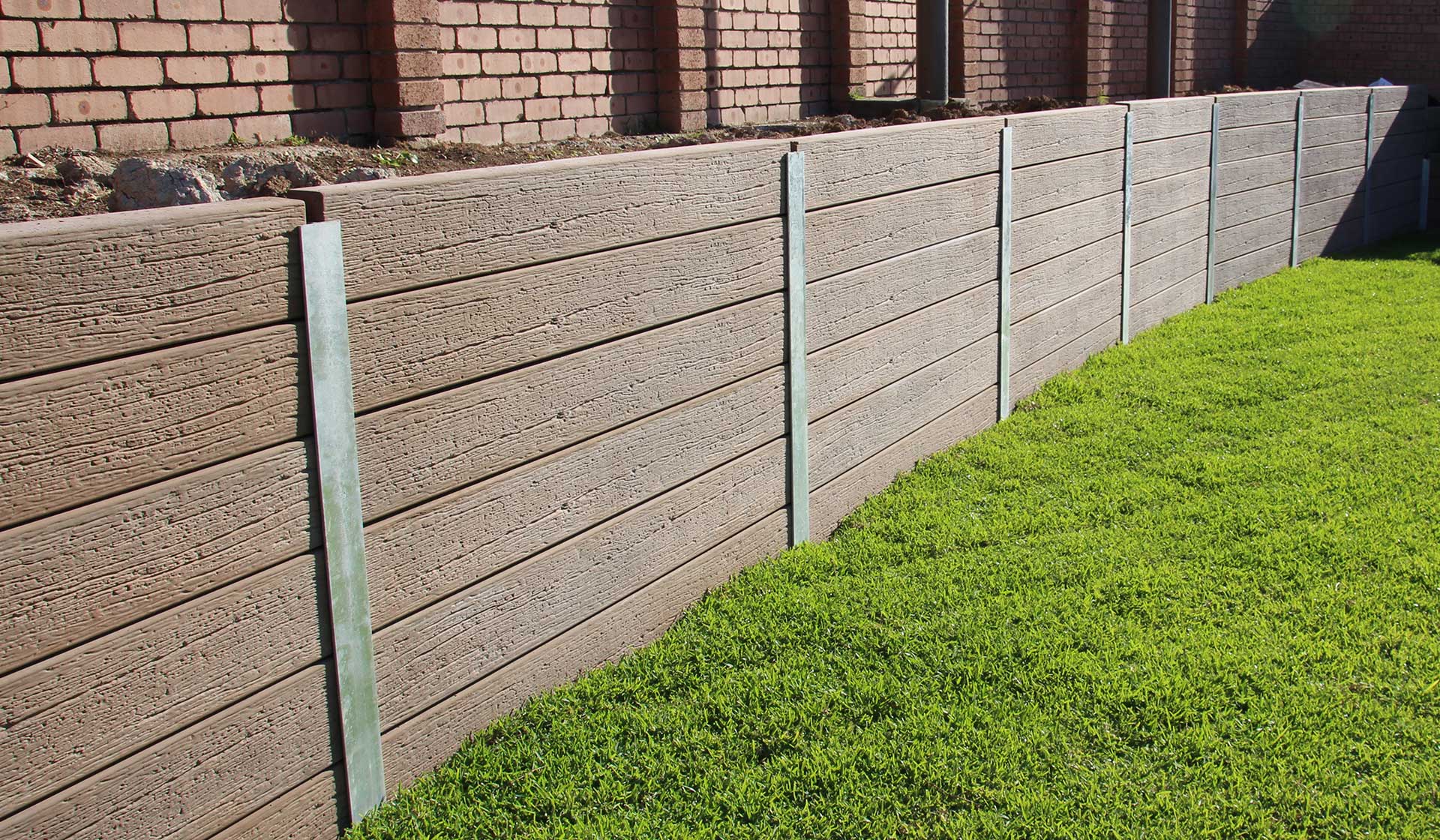Picking the Right Materials for Retaining Walls Sunshine Coast Projects
Picking the Right Materials for Retaining Walls Sunshine Coast Projects
Blog Article
Ensuring Architectural Stability: The Importance of Properly Constructed Keeping Wall Surfaces in Avoiding Slope Failure
In the world of civil design and building and construction, the significance of appropriately constructed keeping wall surfaces in averting incline failing can not be underrated. These frameworks serve as important safeguards against the all-natural forces that can undercut inclines and cause possibly dreadful repercussions. Understanding the careful layout considerations, building and construction methodologies, and maintenance techniques connected with keeping walls is essential in guaranteeing their efficacy and longevity. By exploring the intricate interaction between these aspects, a deeper understanding of the critical function that keeping wall surfaces play in maintaining structural stability and avoiding incline failure arises. Retaining Walls Sunshine Coast.
Function of Retaining Walls in Security
The indispensability of retaining wall surfaces in guaranteeing incline stability is critical in civil design methods. Maintaining walls offer an important duty in stopping soil erosion, handling water overflow, and preserving the architectural honesty of inclines. By sustaining near-vertical or upright quality changes, retaining wall surfaces aid to rearrange lateral stress put in by the dirt, thus minimizing the risk of incline failing.
One key feature of retaining walls is to neutralize the pressure of gravity acting upon the soil mass behind them. This is accomplished with proper layout and building and construction, which takes into consideration elements such as soil kind, wall surface elevation, drain stipulations, and potential additional charge lots. By properly maintaining dirt within specified borders, these structures aid to stabilize inclines and prevent landslides.
Moreover, maintaining wall surfaces add to the appearances of landscapes while offering functional advantages. They can produce terraced levels for landscaping, assistance streets or frameworks on hills, and improve the general functionality of sloped terrain. Fundamentally, keeping walls play an important role in maintaining slope security and guaranteeing the security and longevity of civil design tasks.
Factors Affecting Wall Surface Performance
Aspects that affect the performance of keeping walls include soil residential or commercial properties, wall surface style, and external loads. Dirt residential properties play a crucial function in determining the security and efficiency of a keeping wall. Variables such as dirt type, cohesion, interior friction angle, and groundwater conditions can influence exactly how well a wall retains the dirt behind it. The layout of the retaining wall surface is one more essential factor that influences its performance. Correct wall layout considers variables like wall elevation, wall type (e.g., gravity walls, cantilever walls), reinforcement products, water drainage systems, and building techniques to ensure the wall can stand up to the side stress applied by the maintained soil. In addition, external lots, such as additional charge loads from surrounding structures or web traffic, seismic forces, and water stress, must be meticulously reviewed during the style and building phases to guarantee the wall can adequately stand up to these external forces. By thinking about these elements adequately, designers can create keeping walls that effectively avoid slope failure and make certain long-term structural honesty.
Style Considerations for Keeping Wall Surfaces
Including the crucial facets of soil residential properties and exterior lots right into the structural layout process is crucial for establishing effective preserving walls that guarantee slope stability. When designing maintaining walls, designers should thoroughly review the features of the surrounding soil, including its drain, type, and compaction properties. Recognizing these dirt buildings is vital for establishing the ideal wall surface thickness, elevation, and support needed to hold up against the lateral pressure put in by the dirt mass.
Moreover, outside tons such as additional charge lots from close-by frameworks or traffic, in addition to seismic pressures, have to be considered throughout the layout phase. These lots can considerably impact the security and performance of a retaining wall, requiring using appropriate style strategies and products to minimize potential failing threats.
Additionally, the selection of ideal materials, such as concrete, stone, or timber, need to line up with the site-specific conditions and aesthetic demands. Variable of safety considerations, drain stipulations, and construction techniques are likewise crucial aspects that affect the general layout and capability of retaining walls in preventing incline failing. By meticulously taking into consideration these design factors to consider, designers can make certain the structural integrity and long-term security of retaining walls.

Construction Best Practices for Resilience
When constructing retaining wall surfaces for ideal resilience and longevity, adherence to industry-standard strategies and meticulous interest to detail are paramount. To guarantee the longevity of a keeping wall surface, proper site preparation is crucial. This consists of appropriate compaction of the dirt, proper drain systems, and guaranteeing the wall's foundation is audio. Using top notch products, such as cinder blocks or natural rock, is vital for the durability of the framework. Additionally, employing knowledgeable professionals with experience in building keeping walls can considerably influence the resilience of the final product.
Including reinforcement techniques, such as geogrids or steel bars, can enhance the structural integrity of the preserving wall and protect against prospective failings. By following these building finest techniques, retaining walls can hold up against the test of time and efficiently protect against incline failure.
Significance of Appropriate Maintenance
Regular upkeep is necessary for protecting the architectural honesty and capability of maintaining walls in time. Ignoring upkeep can result in issues such as disintegration, cracks, or also full failure of the wall, endangering the stability of the slope it sustains. To ensure that preserving walls remain to perform their desired function efficiently, routine assessments should be carried out to recognize you can check here any indications of deterioration. These inspections can help in finding early warning indicators of possible problems, enabling timely fixings to be carried out before the concerns intensify (Retaining Walls anonymous Sunshine Coast).

Conclusion
To conclude, retaining walls play a vital duty in guaranteeing architectural honesty and stopping slope failing. By taking into consideration factors influencing wall surface effectiveness, adhering to develop factors to consider, following building and construction finest techniques, and applying proper upkeep, the durability of keeping wall surfaces can be maximized. Retaining Walls Sunshine Coast. It is vital to acknowledge the importance of effectively constructed preserving walls try this out in preserving stability and preventing potential dangers linked with incline failure
Aspects that influence the efficiency of preserving wall surfaces include dirt homes, wall style, and outside loads. Proper wall layout thinks about factors like wall surface height, wall type (e.g., gravity wall surfaces, cantilever wall surfaces), reinforcement materials, drainage systems, and construction strategies to ensure the wall surface can withstand the lateral stress applied by the maintained dirt. By thinking about these factors thoroughly, engineers can build preserving walls that effectively prevent slope failing and make certain lasting architectural integrity.
Maintenance tasks might include clearing drain systems to protect against water buildup behind the wall, fixing any kind of visible fractures or damages, and making sure that the wall surface is totally free from vegetation that can exert stress on the structure. By considering aspects affecting wall performance, adhering to create factors to consider, complying with building and construction best practices, and implementing proper maintenance, the durability of keeping wall surfaces can be maximized.
Report this page